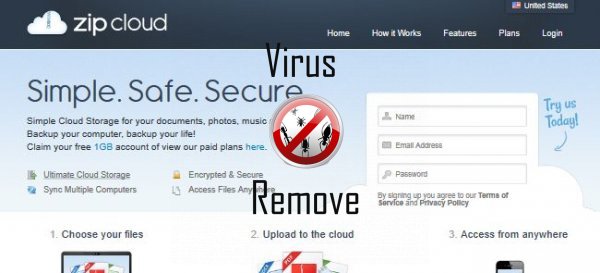
#Remove zipcloud popup mac#
Open the Applications folder and move an item named "Advanced Mac Cleaner" (if it's present) to the Trash. "ZipCloud," sometimes named "JustCloud," is a cloud-storage service with a doubtful reputation. The OS X client is sometimes distributed along with malware. To remove ZipCloud, start by backing up all data (not with ZipCloud itself, of course.) Although ZipCloud may not be malicious itself, it should be suspected by virtue of the company it keeps. Quit the "ZipCloud" or "JustCloud" application, if it's running, and drag it from the Applications folder to the Trash. In the folder, there may be one or more files with a name beginning as follows: Don't try to empty yet.įrom the contextual menu.* A folder named "LaunchAgents" should open. Log out or restart the computer and empty the Trash. You may have installed ad-injection malware ("adware").ĭon't use any kind of "anti-virus" or "anti-malware" product on a Mac. There is never a need for it, and relying on it for protection makes you more vulnerable to attack, not less.

Some of the most common types of adware can be removed by following Apple's instructions. If those instructions don't work for you, or if you have trouble following them, see below. This easy procedure will detect any kind of adware that I know of. Deactivating it is a separate, and even easier, procedure that doesn't involve downloading anything.
#Remove zipcloud popup software#
Some legitimate software is ad-supported and may display ads in its own windows or in a web browser while it's running.
#Remove zipcloud popup update#
#Advanced mac cleaner pop up firefox update software That's not malware and it may not show up. Also, some websites carry intrusive popup ads that may be mistaken for adware. If none of your web browsers is working well enough to carry out these instructions, restart the computer in safe mode. That will disable the malware temporarily. Please triple-click the line below on this page to select it, then copy the text to the Clipboard by pressing the key combination command-C:įrom the menu bar and paste into the box that opens by pressing command-V. Either a folder named "LaunchAgents" will open, or you'll get a notice that the folder can't be found. If the folder isn't found, go to the next step. If the folder does open, press the key combination command-2 to select list view, if it's not already selected. There should be a column in the Finder window headed Date Modified.

Click that heading twice to sort the contents by date with the newest at the top. If necessary, enlarge the window so that all of the contents are showing.įollow the instructions in this support article under the heading "Take a screenshot of a window." An image file with a name beginning in "Screen Shot" should be saved to the Desktop. Open the screenshot and make sure it's readable. If not, capture a smaller part of the screen showing only what needs to be shown. Drag the image file into the editing window to upload it.

The folder that may open will have the same name, but is not the same, as the one in Step 1.

This time the folder will be named "LaunchDaemons." As in that step, the folder may not exist. Open the Safari preferences window and select the Extensions tab. If any extensions are listed, post a screenshot. If there are no extensions, or if you can't launch Safari, skip this step. #Advanced mac cleaner pop up firefox update software.


 0 kommentar(er)
0 kommentar(er)
